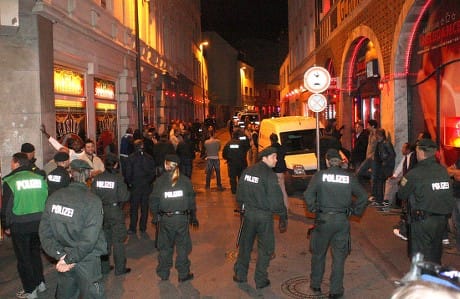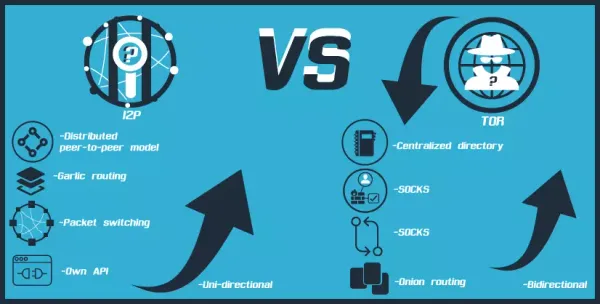European Surveillance Integration: The Aachen-Heerlen Darknet Case
German and Dutch authorities demonstrated how postal metadata, cryptocurrency analysis, and international surveillance cooperation can penetrate darknet anonymity tools in a multi-million euro drug case.

On August 19, 2025, German and Dutch authorities raided properties in Heerlen, Netherlands, arresting three men aged 33, 39, and 40 who allegedly ran a multi-million euro darknet operation selling MDMA, ecstasy, and cocaine through encrypted marketplaces. The case demonstrates how European surveillance systems correlate postal data, cryptocurrency transactions, and digital forensics to penetrate anonymity tools that vendors rely on for protection.
The official police statement confirms investigators seized drugs worth "several million euros," along with a firearm, five-figure cash amounts, and data storage devices now being analyzed by Aachen criminal police. The operation's vulnerability: using Deutsche Post mailboxes near the German-Dutch border, which created trackable patterns that German Federal Criminal Police (BKA) forensics teams correlated with darknet transaction data.

The Operational Architecture
The operation reportedly ran for years, processing orders through darknet marketplaces, encrypted e-commerce platforms accessible only through specialized software like Tor Browser (which routes internet traffic through multiple servers to hide user identity) where vendors and buyers trade using cryptocurrency. According to multiple German news sources, this wasn't a small-scale operation but a structured enterprise with established distribution networks.
The vendors operated from Heerlen, a Dutch city 20 kilometers from Aachen, Germany. This positioning leveraged jurisdictional differences, Netherlands has historically different drug policies compared to Germany, where possession of MDMA or cocaine triggers multi-year prison sentences. By living in the Netherlands but shipping from Germany, they operated across regulatory boundaries.

Their shipping method involved German postal infrastructure, specifically mailboxes near the border. This approach likely aimed to maintain physical distance from drop points while avoiding Dutch postal tracking. However, every package entering the Deutsche Post system generates metadata: timestamps, locations, weight classifications, destination patterns. BKA's IT forensics unit, Germany's federal cyber-crime division, correlates this shipping data with blockchain transactions, vendor advertisement patterns, and customer delivery confirmations scraped from marketplace forums.

How German Surveillance Infrastructure Operates
The Central Cybercrime Unit of North Rhine-Westphalia (Zentrale Stelle Cybercrime Nordrhein-Westfalen) led the technical investigation. This unit specializes in darknet operations, cryptocurrency tracing, and what German authorities call "digital forensics", essentially mass surveillance correlation.

The technical reality: German postal services photograph every package. Since 2017, Deutsche Post has deployed automated sorting systems with integrated cameras that capture sender labels, return addresses, and package dimensions. This data feeds directly to law enforcement databases when flagged by weight anomalies, destination patterns, or random inspection protocols.
Public mailboxes don't provide anonymity. German authorities have deployed ANPR (Automatic Number Plate Recognition) cameras at major postal hubs since 2019. Cross-referencing vehicle movements near border mailboxes with package drop times provides probable cause for surveillance warrants.
BKA's involvement indicates cryptocurrency analysis was central. Every darknet marketplace transaction leaves blockchain evidence, Bitcoin or Monero addresses, transaction amounts, timing patterns. BKA runs cluster analysis on these transactions, identifying wallet addresses that receive multiple small payments (customer purchases) then consolidate funds to exchange wallets (cash-out points). When these patterns align with package shipment timings, the operational fingerprint becomes identifiable.
The Raid's International Choreography
Executing arrests across international borders requires legal theater. German prosecutors issued international arrest warrants for two suspects, which Dutch authorities executed during synchronized raids on three residential buildings and a boxing studio. Forty-five officers participated, a number that suggests they expected resistance or needed to secure multiple locations simultaneously to prevent evidence destruction.

According to Express.de, one suspect has already been extradited to Germany, while another remains in Dutch custody pending extradition proceedings. This extradition speed indicates either the suspects lacked quality legal representation or Dutch authorities fast-tracked the process under European Arrest Warrant procedures, EU legislation that streamlines criminal transfers between member states.
The boxing studio raid deserves attention. Gyms, particularly combat sports facilities, serve as money laundering fronts across Europe. Cash-heavy membership fees, equipment purchases, and event hosting create paper trails that obscure drug proceeds. The suspects likely used the facility to justify their lifestyle to Dutch tax authorities while converting drug profits into "legitimate" business income.
Technical Analysis of Operational Security Vectors
Physical-Digital Correlation: Operating from the same geographical area (Heerlen) while shipping from nearby German border mailboxes created correlatable patterns. Alternative approaches involve randomizing drop locations across regions, using different postal services and varying timing patterns.
Postal System Integration: German postal infrastructure integrates with law enforcement databases. Every EU postal service shares data with law enforcement under anti-terrorism frameworks established after 2001. This creates inherent vulnerabilities for any operation using official postal systems.
Device Security: Police seized "data storage devices and electronic equipment." Operations focused on anonymity typically use amnesiac operating systems like TAILS (The Amnesic Incognito Live System), which runs from USB drives and leaves no forensic traces. The seizure of persistent storage suggests standard operating systems were in use, potentially containing browsing history, wallet files, and customer databases.

Communication Channels: Multi-year operations require vendor-customer communication. Most darknet marketplaces use internal messaging systems that law enforcement has repeatedly compromised. Rotating marketplace accounts, using unique usernames across platforms, and maintaining customer communications through encrypted channels are standard practices in the space.
Financial Architecture: Five-figure cash seizures indicate physical currency storage. While this avoids bank scrutiny, physical seizures become possible during raids. Cryptocurrency through privacy coins like Monero offers different risk profiles, though blockchain analysis tools continue advancing.
What German Authorities Aren't Saying
The police statement deliberately obscures several operational details. They claim the investigation succeeded through "extensive IT forensics" without specifying whether they compromised the marketplace, turned an informant, or parallel-constructed evidence from illegal surveillance methods.
The timeline raises questions. The raid occurred August 19, but news broke September 12, a 24-day gap. This delay suggests authorities either negotiated cooperation from arrested suspects, analyzed seized devices for additional targets, or coordinated with other European agencies on related operations.
No marketplace name appears in any report. This omission could mean the platform remains operational (authorities maintaining access for ongoing investigations), or they're protecting intelligence sources. Major darknet markets in 2025 include ASAP, Archetyp, and Abacus, all of which German authorities have previously infiltrated.

The "several million euros" value claim deserves skepticism. Police routinely inflate drug seizure values using street prices rather than wholesale costs. A million euros in MDMA at German street prices (€10-15 per pill) represents 70,000-100,000 pills, substantial but not earth-shattering for a multi-year operation.
Operational Security in the European Surveillance Context
The case highlights how trusting third-party infrastructure creates vulnerabilities. German postal services, residential addresses, standard computing devices, and centralized marketplaces all represent potential surveillance touchpoints that state actors monitor.
Current darknet operations implement defense-in-depth strategies: multiple anonymity layers, randomized patterns, compartmentalized information, and zero-knowledge architectures where no single point contains complete operational data. This case demonstrates what happens when these principles aren't fully implemented.

The firearm seizure changes the legal calculus significantly. Under German law, weapons possession during drug crimes triggers mandatory minimums that transform five-year sentences into decade-long imprisonments. Whether for protection or other reasons, weapon possession during illegal operations multiplies legal exposure.
The Surveillance State's Victory Lap
This case demonstrates European surveillance integration in action. German cyber-crime units, Dutch police, postal surveillance systems, and financial tracking networks collaborated seamlessly to dismantle an operation that relied on encryption and anonymity tools.
The authorities frame this as protecting public health from dangerous drugs. The reality: the same surveillance infrastructure tracking MDMA shipments monitors political dissidents, cryptocurrency users, and anyone operating outside traditional financial systems. Every darknet bust normalizes mass surveillance, conditioning citizens to accept that privacy itself signals criminality.
These arrests showcase how operating outside state-sanctioned economic channels triggers coordinated international surveillance. The vendors didn't participate in regulated markets, didn't pay taxes, didn't submit to licensing frameworks. The state's message remains consistent: operate outside official channels, and the full weight of international surveillance infrastructure will eventually find you. The drugs are the headline, but the underlying issue is control, economic, social, and political.




